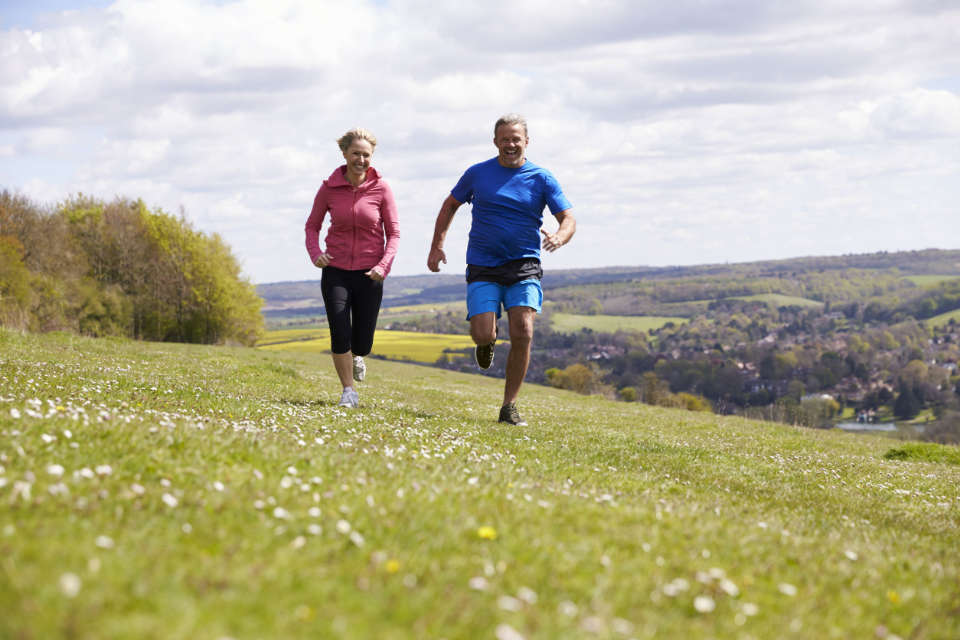It’s the epitome of stamina, and it’s the most challenging long-distance race in the world, ever since it first came into life in 490 B.C. on the dusty roads leading to Athens. As such a tremendous endeavor, it’s the crown jewel of all runs for any lover of the sport, and a challenge that will push you to overcome all of your known and unknown limitations. And if we are to judge by Fauja Singh BEM, also known as the Turbaned Tornado, you can do so at any age – even when you become a centenarian.
In truth, the preparations alone take an enormous physical and psychological toll, so it becomes essential that you know how to adapt yourself to the sport at any age, and adjust the training to suit your changing abilities.
The vibrant twenties
Your greatest advantage in these vigorous years of your life is that you have room to make mistakes in your training. If you push yourself too hard and over-train on occasion, even if you have an injury, you are more likely to recover fully and still reach the finish line.

That, however, is no excuse for neglecting your body. If you plan to treat running as a lifelong sport that it is, then even your earliest preparation stages should be mindful of your later running career.
New runners can begin their training volume at up to 20 miles per week, while those with a consistent running background may aim for even up to 50 miles per week. As for frequency, three to five times a week will cover your needs, while recovery days can be used to complement your routine with strength training, walking and speed work.
Keep in mind that most coaches will strongly advise against running the full 26.2 miles during your preparation weeks. You don’t want to put your body through such excruciating pain just before the actual race and risk injury.
The unrelenting thirties
While we may be at our strongest and sturdiest in our twenties, if you have lead an active life thus far, you will peak somewhere in your mid-thirties and maintain your speed and strength as you approach the 35-mile-mark. Many athletes peak as they turn 38 or 39, and so coach Mark Cleary calls this period “the magic number”, when many runners discover their best results.

This is where your age starts affecting your performance and your training, as it becomes an essential factor in determining your recovery and cross-training needs. Ladies in this age-group start feeling the effects of decreasing bone mass, and according to Amy Begley, a 2008 Olympian, it becomes all the more important to incorporate lifting.
This is the time to also look to your own results as a point of comparison – try to adapt your workouts to beat your own expectations and your best time even in the briefest, 200m runs. That may end up giving you a PR marathon time several seconds (or even minutes) better than expected.
The resilient forties
As you step into the master’s league, your performance changes even more to reflect your reducing muscle mass and bone density, but the greatest perk lies in your heart rate, in the comfortable range of up to 60 for women and up to 56 for men. And while you may no longer be the Usain Bolt that you were in your thirties, you can now focus on maintaining your strength and endurance levels.

Perfect your diet to pack as much muscle as possible, and you can no longer afford to skip your weight training sessions, or your regular stretches to prevent calf pulls and muscle cramps. In order to boost your VO2 max, you no longer have your youth to rely on, but have to focus heavily on retaining speed and muscle.
At this point, it’s best to have around three running days per week, in order to cover the mileage but without forcing added damage to your body. Years of running have given you experience and advantage over beginners, but your body still feels the accumulated years of use.
And don’t forget that your mindset at this age plays a pivotal role in success. According to sports psychologist Bradley Young, Ph.D.: “People underestimate the cognitive part of running, but mental toughness isn’t genetic—it’s honed through experience.”
The veteran fifties
Once you enter the realm of the big 50, running is replaced more frequently by walking breaks. This is a time when wear and tear, old injuries and still decreasing muscle and bone mass take their greatest toll, and a smart training routine is essential to prevent further harm while maintaining your health.

Jeff Galloway, an Olympian who focuses on training this particular age group, emphasizes the importance of non-training days and explains how even beginners can start their routine: “Gradually increase a gentle walk to 30 minutes. Start running by doing a gentle jog or “shuffle” for 10 seconds, during the 10 minutes in the middle of the half hour walk. Every other day, gradually increase the number of minutes doing the 10 sec shuffle run/50 second walk.”
All the rules from the previous age group also apply – regular stretches to prevent muscle pulls and injuries, plenty of active recovery through walking and regular strength training all serve as game-changers for those who wish to reach the 26.2-mile finish line.





